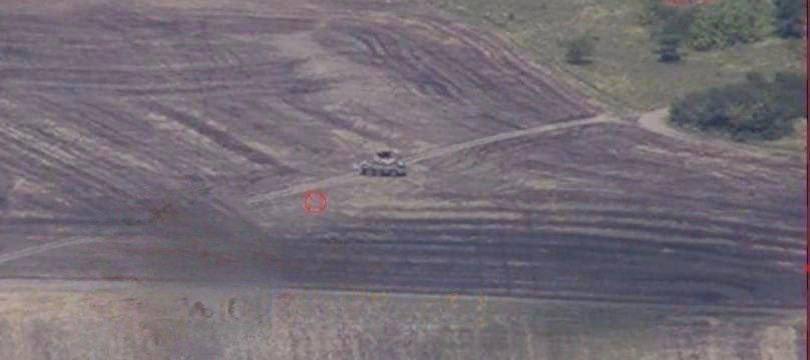(VIDEO) Watch Russia Uses North Korean-Made “Bulsae-4” ATGM in Ukraine
The “Bulsae-4” NLOS ATGM (Non-Line Of Sight Anti-Tank Guided Missile) is said to have a range of over 10 kilometers.


(DEFENCE SECURITY ASIA) – Russian forces in Ukraine have reportedly begun using North Korean-made “Bulsae-4” anti-tank missiles, further evidence of the increasingly close military cooperation between the two nations.
The “Bulsae-4” NLOS ATGM (Non-Line Of Sight Anti-Tank Guided Missile) is said to have a range of over 10 kilometers.
There are also reports suggesting that the North Korean-made missile can strike targets up to 25 kilometers away and perform “top attack” strikes on targets including tanks and armored vehicles.
Reports from the Ukrainian battlefield claim that the North Korean “Bulsae-4” anti-tank missile system has been seen in Kharkov, destroying Ukrainian mobile artillery systems, specifically the British-donated AS-90.
The “Bulsae-4” system uses North Korea’s 6×6 M-2010 armored vehicle, which carries a missile launcher with eight anti-tank missiles on top. The missile is also equipped with a video camera.
Video Player
00:00
00:00
Previously, South Korean intelligence revealed that North Korea had supplied approximately 2,000 containers filled with short-range ballistic missiles, anti-tank missiles, and various other ammunition and weapons to Russia.
According to South Korean intelligence officials, ships carrying these containers sailed from Rajin, North Hamgyong Province, to Vladivostok in Russia’s Far East.
The South Korean military suspects that the 2,000 containers contained more than 200,000 122mm artillery shells and over a million 152mm artillery shells, along with ammunition for other weapons.
“Signs of North Korea supplying weapons and ammunition to Russia have been detected since mid-last year, and the shipment of containers increased in August last year before North Korean leader Kim Jong Un’s visit to Russia,” said a South Korean official.
The North Korean leader met with President Vladimir Putin at the Vostochny Cosmodrome in Russia’s Far East in September last year.


To support Russia’s military campaign in Ukraine, North Korea has sent its latest short-range ballistic missile (SRBM), the Hwasong-11 (KN-23), for use by Moscow.
According to international media reports quoting weapons experts, Russia has deployed North Korean-made ballistic missiles, which can be launched and concealed quickly, and strike targets with high precision.
The short-range ballistic missile Hwasong-11 is difficult to intercept with air defense systems. Crucially, the supply of ballistic missiles from North Korea has expanded Moscow’s arsenal in its campaign against Kiev.
Data from the Korea Institute for Defense Analyses (KIDA) indicates that each Hwasong-11 short-range ballistic missile, capable of hitting targets between 400km and 800km, costs US$5 million (RM22.5 million).
“Given that the Hwasong-11 short-range ballistic missiles supplied by North Korea to Russia are of the latest type, Russia may have to pay a ‘high price’ to acquire them,” said a weapons expert.
Russia likely pays for these North Korean ballistic missiles not only with cash but also with commodities, food supplies, and weapon technology sharing, including intercontinental ballistic missile development. — DSA


Comments are closed.